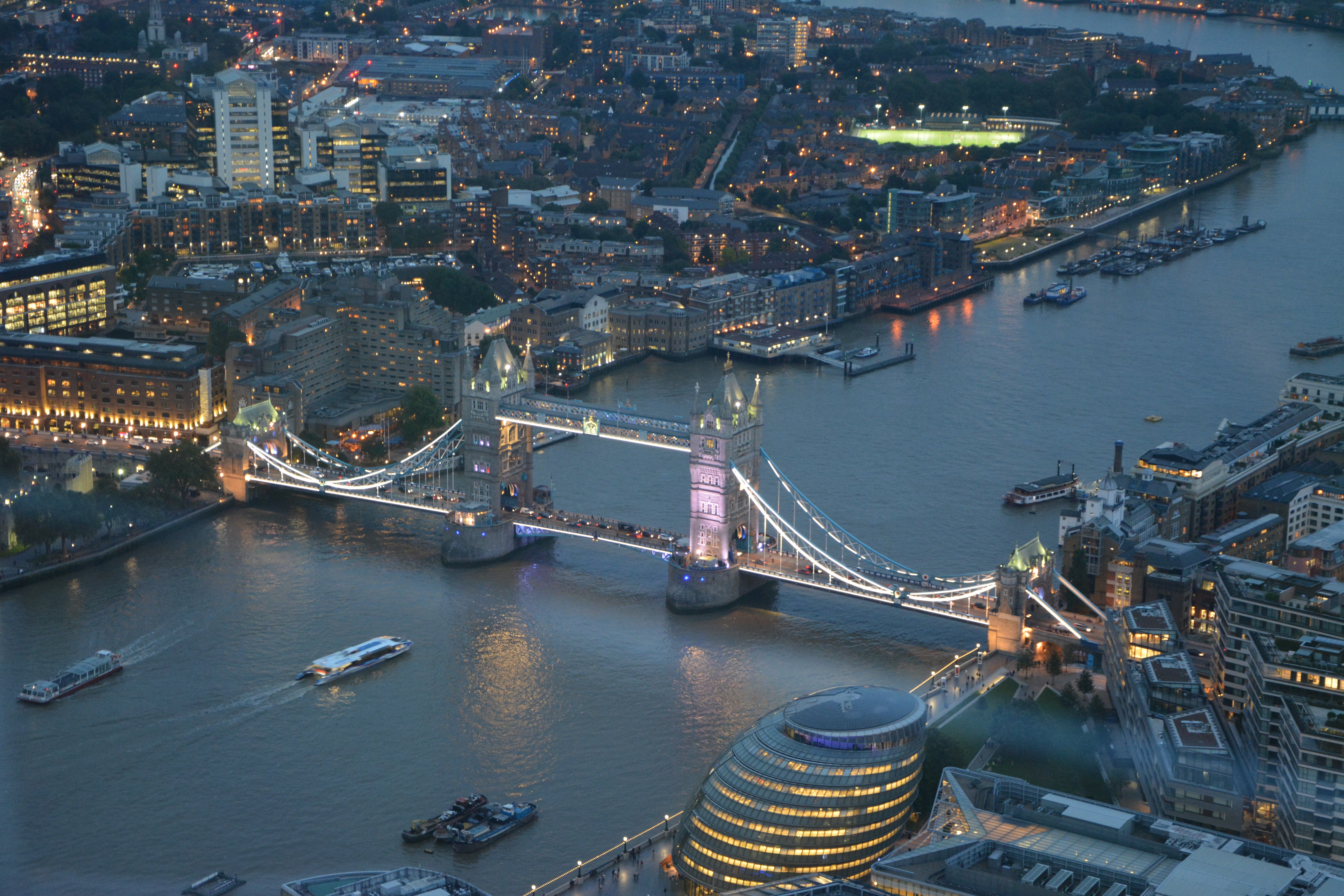Tower Bridge. A name and image synonymous with London, it can lay a very good claim to being the most famous bridge in the world. Its iconic neo-Gothic fairy-tale design encases a technological feat of engineering that forms the ‘bascule’ bridge, allowing it to open on both sides. But its design was of integral importance.
There was an increasing necessity for finding another way to accommodate the growing numbers of people that needed to cross the Thames in East London. A census was able to capture population numbers and trends north and south of the river, in an early demonstration of the importance of data insight for city planning.
But, at the same time, it was also of vital significance that the zone between London Bridge and Tower Bridge – the ‘Pool of London’ – be able to facilitate the stream of river trade that glided into the heart of the city. In light of this dilemma, a committee initiated a competition for designs for the big solution and Tower Bridge took the win, with its construction completed towards the end of the 19th century. A landmark was born.
In a way, since cities first began to emerge, they’ve striven to be ‘smart’. The fundamental pillars displayed above remain the same today: data, connectivity and efficiency, all with the purpose of making citizens’ lives better. But the emergence of digital technology, the internet, rapid urbanisation and social and healthcare advances have transformed the game. This is objective, real-time data, insight and connectivity on a new level.
So, in the modern context, what transports a city into a smart one?
Setting the smart city agenda
In a nutshell, the main prerogative of a smart city is to enhance citizens’ lives through the use of technology. At the heart of this is sustainability, the environment and the drive for more equitable, socially inclusive cities. Smart cities need to be responsive and adaptive to their citizens’ needs, creating a network of connectivity and mass data that provides significant benefits without compromising privacy.
During last year’s COP26, much was said by campaigners about those in power placing a reliance on technology and forgoing the pressing need to create behavioural change as well. Decisions have to come from the top. And, all in all, it’s true. But tech has the power to unlock this shift and encourage behavioural change (and, let’s be honest, we can’t really rely on political leaders to advance sustainable change anywhere near quick enough at the moment). Smart cities are fundamental for sustainability – it’s embedded within their DNA – and for bringing about the social equity required to achieve this.
Observing the smart city scene
But what does the smart city landscape currently look like? A range of scaleups are leading the advance.
Healthtech company Navenio provides indoor location software to hospitals to improve patient care and transform workforce efficiency. Its AI technology tasks healthcare staff based on their location, prioritising workload in real-time on the basis of ‘right person, right time, right place.’
Vivacity Labs is revolutionising the transport scene, with its pioneering AI-powered sensors and Smart Junctions able to gain accurate, detailed, real-time, 24/7 insight into travel trends and patterns of multiple modes. This helps urban and traffic planners optimise traffic networks and reduce congestion, journey times and emissions.
Finally, Web3 telecoms startup Weaver Labs is effectively creating a ‘Sonos for networks’, establishing an open and shared marketplace of connectivity assets with the use of concepts such as blockchain, NFTs and smart contracts. In fact, its software Cell-Stack is being used on the Smart Junctions project; it’s helped to reduce deployment and operational costs and enable the connectivity required to transmit data between technology and to dashboards for authorities to monitor in real-time.
And this showcases an even greater point: collaboration is the cornerstone of smart cities. What emerges is a thriving ecosystem of technology, talking and communicating with each other to create the best, most efficient experience possible for the citizen. For example, air quality sensors, geo-spatial technology and apps could link up with the aforementioned technology to optimise all areas that feed back into the smart city mantra.
The more data, the more opportunities for new players to enter the field and innovate in ways we can’t yet conceive. When put like that, exciting possibilities could explode across the smart city scene.
Making the smart city future visible
But how does someone rummage through the multitude of technologies available to find the companies, solutions and initiatives that are advancing the smart city vision? And, when so invested in a project, it can become easy to forget that many don’t know much about the smart city concept outside of the sector. So how do you break it down in layman’s terms?
In a world where social media and its news streams (real or fake) dictate and dominate the public’s consciousness, the ability to create a brand identity and story that showcases the benefits of smart cities is paramount to assuaging any concerns.
Whether it’s a potential customer, partner or the public, it boils down to the same quality – trust. Trust is essential; trust of the product; trust of the company’s innovation and direction; trust with data privacy. Again, all of this is and can be generated from your brand image, story and identity.
From eye-catching news stories, insightful comments on the latest trends and thought leadership articles to social media and website content, you can convey the work and values that are instilled in the company. From this base, you have the platform to advance, innovate and grow, becoming a reputable voice in the sector (and society).
It’s an exciting time to be in the world of smart cities; our livelihoods look set to be improved immeasurably in the years ahead. The next Tower Bridge is being formed by an invisible current of connected technology, bridging our lives together. It’s time to make this brilliance visible and take our smart cities to new places.
Related Articles



